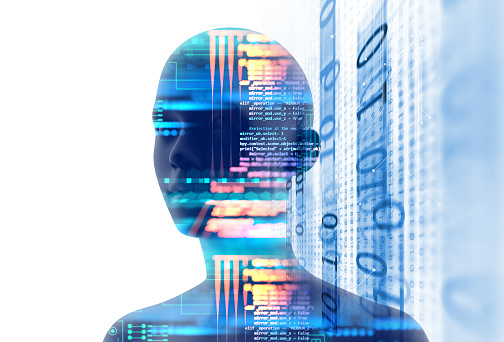Humans And AI Improve Business And Quality Of Life Together
The future has arrived where AI and human beings partner to improve business and quality of life.

Two of the themes Sci-Fi movie fans have always loved about the genre are “artificial intelligence” and “the future.” On the friendly side, the Stars Wars franchise played up the good-natured but sometimes annoying thinking robot C3P0. On the ominous side, Arnold Schwarzenegger earned his action bones as The Terminator, while underscoring the idea that the future is unwritten. Since most of us don’t interact with high-level AI on a daily basis, our feelings about thinking machines are based on ideas in popular culture. Artificial intelligence could be good or it could be dangerous. But whether we like it or not, AI is not a something in an alternative future because that future is now. One of the questions we should be asking is: Can humans and AI improve business and quality of life together?
The Answer is Now
Amazon may have taken the first giant leap toward acclimating humankind to AI with the popular Alexa. More than 1.8 million people have embraced the affable little AI device that manages more than 3,000 tasks, talks to us in a pleasant voice and will even unlock our car. Alexa appears to be everyone’s new friend. But in terms of business efficiency, Alexa has also improved workplace productivity by shortening the time it takes to type in a Google search to just asking it a question. There’s no need to even switch web pages any longer thanks to our kindly AI. And that forms the basic intersection of how AI and humans can cohabitate in the workplace while jointly improving business efficiency.
There’s little doubt that Alexa has also improved people’s emotional comfort with AI in the home and workplace. No one lost their job because the tiny box provided quick answers and that helps set the stage for AI and humans to do bigger and better things together.
To that end, investment into AI technology has accelerated at a near-exponential level in recent years. Speculators dropped a paltry $282 million into development in 2011. But that has ballooned into $1.5 billion last year and more than 200 corporations are drilling down on AI in ways that help workers. There’s no doubt, the future is now.
Smart Analytics
All the analytics experts reading this, raise your hands. Apparently, not everyone has mastered analytics but AI could be changing that for you. Years ago, there were massive filing cabinets filled with paper and numbers and we hired people to make sense of it all. Today, we have databases that any designated coworker can access. Unfortunately, few can make sense of it because we don’t speak the language.
Emerging AI can translate “dataese” into English, Spanish or any language you program. By transforming information into a human narrative and being able to ask targeted questions, AI can turn all of us into analytics experts, to some degree. If we know the right questions to ask, AI can pull the answers from mass collected data. The human-AI relationship becomes symbiotic with the caveat that human beings are the creative minds and ultimate decision makers. In effect, AI just helps make us better and more knowledgeable about our respective field.
Changing Responsibilities
Millennials seem to have a higher comfort level working with AI than those with an eye toward retirement. There have always been cultural gaps between young and old. There was a time rock ‘n’ roll was considered immoral and good TV had to be PG. Maybe they were right. But I digress.
The point is that Millennials have a forward-thinking perspective about AI and many believe it will reduce the need for tough labor while increasing opportunities for creativity. Think “Star Trek: Next Generation” where professional endeavors are pursued out of passion instead of paying the mortgage and utility bills. Consider these examples and how they may change human tasks and quality of life.
- Robotics Automation: It’s true that manufacturing sectors have brought in human-replacing robotics to improve efficiency. Technology has always taken people out of tough manual labor. Think farm equipment replacing hand-picking crops or the Industrial Revolution automating weaving. The rise of AI is taking humans out of dangerous environments and back-breaking physical jobs and into thinking tasks.
- Stock Trading: Hedge funds and trading companies have already put AI to use generating algorithms and racking up profits. One company reportedly can replicate up to 1,800 days of trading in minutes. This doesn’t mean all those Wall Street traders shouting with hands in the air are going the way of the dinosaur. In fact, AI trading relies on human thought patterns to generate predictive models. It’s more likely that this AI product will open the door to more startup outfits and individual wealth. Again, it plays into the Millennial idea of machines doing the heavy lifting so that humans can pursue higher callings.
In many ways, we live at a unique time in history where the fears and realities of AI are sorting themselves out. On one hand, no one can dispute the fact that AI automation displaced physical labor in manufacturing. On the other hand, unemployment stands at a 16-year low. That means humans have not been kicked to the curb. It seems to point to improved wage-earning business environments where AI and other technologies co-exist with everyday people. Simply put, Alexa is our friend.





